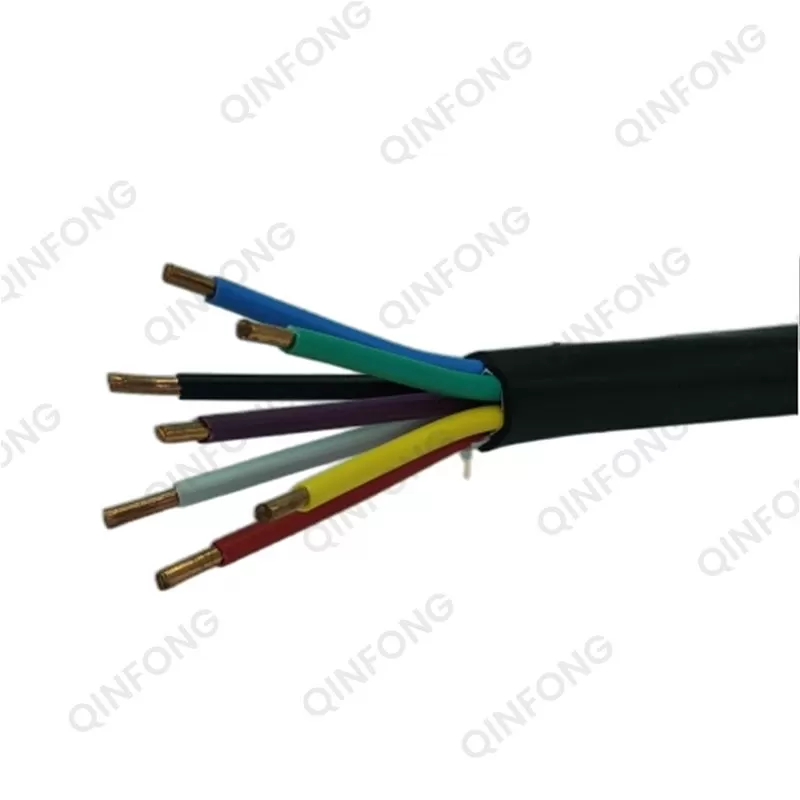Selecting the correct control cable is critical to ensuring optimal performance, safety, and longevity in industrial and commercial applications. With various types of control cables available on the market, making the right choice depends on a number of technical and environmental factors. In this comprehensive guide, we provide the most authoritative insights to help engineers, procurement specialists, and system integrators make informed decisions.

A control cable is a multi-conductor cable used to transmit signals to control the functioning of equipment and systems. It is widely used in automation systems, machine tools, conveyor systems, and industrial machinery, providing reliable signal transmission in dynamic and static applications.
Control cables are engineered to withstand mechanical stress, abrasion, electromagnetic interference (EMI), and varying environmental conditions.
Before selecting a control cable, the specific application should be evaluated. Ask the following:
Will the cable be used in a fixed installation or a flexing/moving environment?
Is the environment indoor or outdoor?
Will it be exposed to chemicals, oils, or UV light?
Is electromagnetic compatibility (EMC) a concern?
Answering these questions will narrow down the choices significantly and determine necessary cable specifications.
The conductor is the core of the cable that carries the electrical signal.
Material: Most control cables use copper conductors due to excellent conductivity and flexibility. For corrosive environments, tinned copper is preferable.
Cross-sectional Area: The size of the conductor determines the current-carrying capacity. Use IEC 60228 standards to determine the correct wire gauge.
The insulation around the conductor affects the cable’s thermal and dielectric properties.
PVC: Cost-effective and offers good resistance to moisture and chemicals.
XLPE: Suitable for high-temperature applications.
TPE or PUR: Ideal for high-flex and robotic applications due to superior mechanical resistance.
Shielding is essential for preventing electromagnetic interference (EMI), especially in environments with high electrical noise.
Unshielded cables: Suitable for non-critical signal transmission in low-noise environments.
Foil Shield (FTP): Protects against EMI at higher frequencies.
Braided Shield (STP): Offers excellent low-frequency EMI protection and mechanical strength.
Overall + Pair Shielding: Best for high-precision signal transmission and data integrity.
The outer jacket protects the internal cable components from mechanical and environmental stress.
PVC Jackets: Economical and flame-retardant, suitable for light industrial use.
Polyurethane (PUR): Highly resistant to abrasion, oils, and UV radiation—perfect for outdoor and dynamic applications.
TPE Jackets: Flexible, halogen-free, and resistant to a wide range of temperatures.
Always verify the operating temperature of the custom control cable:
Standard PVC: –10°C to +70°C
PUR: –40°C to +90°C
Silicone or TPE: Can exceed +150°C
Choose a material that can sustain the extreme temperature range of your application.
In environments with exposure to oils, acids, solvents, or fuels, select cables with PUR or TPE jackets. These materials resist degradation and maintain signal integrity over time.
For indoor use in public buildings or tunnels, select LSZH (Low Smoke Zero Halogen) cables. These reduce toxic smoke emissions and enhance safety during fire incidents.
For cables in drag chains, robotic arms, or moving machinery, use high-flex control cables designed for continuous movement.
Look for terms like "continuous flex" or "chainflex."
Verify bend radius and number of flexing cycles (e.g., >10 million cycles for heavy-duty applications).
For harsh industrial environments or underground installation, choose cables with enhanced mechanical strength, such as reinforced jackets or steel wire armoring.
Control cables typically carry voltages up to 600/1000V.
Ensure the voltage rating matches your application.
For low-voltage digital signals, shielded low-capacitance cables may be required.
Always ensure compliance with relevant industry standards:
IEC 60228, IEC 60332 – Conductor and flame retardant standards
UL & CSA Listings – For applications in North America
RoHS, REACH – Environmental compliance
CE Marking – For the European Union
Cables that are certified and tested ensure reliability, safety, and longer service life.
Clear color coding simplifies installation and troubleshooting:
Standard Color Codes (e.g., DIN 47100)
Numbered conductors for high-core-count cables
UV-resistant markings for outdoor use
Always choose cables with permanent, legible, and durable markings.
Choose reputable manufacturers with proven quality control, technical support, and application-specific product lines:
LAPP
HELUKABEL
ÖLFLEX
Igus
Belden
These brands offer cables tested under real-world conditions and provide specification sheets, CAD drawings, and lifetime calculators.
To complete a professional installation, consider:
Cable glands with strain relief
Conduits or trunking for physical protection
Grounding and bonding for shielded cables
Heat shrink tubing for identification and protection
Selecting the right control cable involves a precise evaluation of mechanical, environmental, and electrical factors. By understanding the application's specific demands and choosing power cables with appropriate insulation, shielding, flexibility, and compliance, long-term performance and safety can be assured. Use detailed datasheets, consult with manufacturers, and always refer to national and international standards to make the most informed choice.
None
None

Comments
0